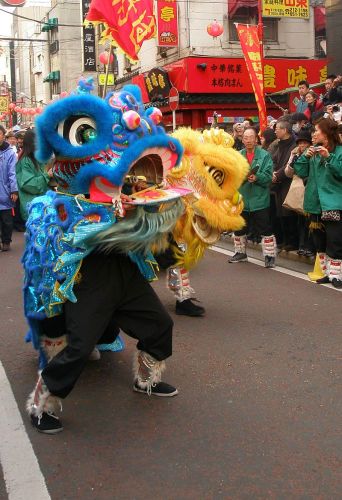Chinese New Year
Chinese New Year combines lunar and solar movements. It is usually on the second new moon after the winter solstice. It is always between the 21st of January and the 20th of February. In 2013 the Chinese will celebrate the New Year on the 10th of February. Traditional New Year greeting is "Gung Hey Fat Choy" or in English "Wishing You Prosperity and Wealth".
Every Chinese New Year has the animal zodiac sign related to it. In 2012 it is the Dragon. In 2013 it will be the Snake. There are 12 animals in the Chinese zodiac – Rat, Ox, Tiger, Rabbit, Dragon, Snake, Horse, Goat, Monkey, Rooster, Dog, and Pig. Certain animal sign repeats every 12 years.
The Chinese New Year coincides with the start of Spring. People then plant first plants. That is why the Chinese New Year is also known as the Spring Festival. The Chinese believe that whatever happens to you during the New Year celebrations will definitely influence your life in the coming year.
Until the special New Year's Eve dinner which unites whole family there are several things to be done. The household has to get rid off objects closely related with the passing year. The Chinese believe it is necessary to hide all brushes and brooms. All debts should be payed or at least reduced. Making peace with all family members, cousins and neighbours is also important. Business owners should settle all previous disputes with their business partners.
Family has to do some shopping. The following objects have to be bought – lai see or lucky money envelopes, oranges or tangerines, round candy tray, some flowers (peach, plum and water lilly are the most common), new clothes and shoes for all family members.
The New Year's Eve does not only include the dinner. People also worship their house gods and ancestors. Old year should "leave" the home. That is why at midnight all doors and windows should be opened.
Various traditions are observed on the New Year's Day too. The role of colours in everyday life of Chinese people is very significant. For this occasion, there are many red and golden decorations in all homes and other places. Red is the colour of happiness. Golden colour symbolizes wealth and prosperity.
 Chinese New Year Celebration
Chinese New Year Celebration
Lai see or lucky money envelopes are actually red envelopes with some money inside. The amount should be of even numbers. Odd numbers are associated with Bai Jin money given during funerals. Some even numbers are considered luckier than the others. The number 8 is the lucky one because it is the homophone for word "wealth" (fā).
It is tradition to give lai see envelopes to children in the family. In some firms employees also get this special envelope. Tradition of exchanging small gifts between friends and relatives also exists. Such gifts include fruits, chocolate, biscuits, cakes etc. Pears should be avoided. In Mandarin both pears and separation are pronounced as “lí”. Pear is also used as an offering for ghosts. One certainly would not like to have ghosts when celebrating the New Year.
Oranges and tangerines also have symbolic meaning. They are symbols good health and long life. Round candy tray includes two types of symbols. Round shape symbolizes unity. Sweets are symbols of good, "sweet" life.
Most families have plants in their home. If some of them blooms on the New Year's Day it is considered a good sign. The food eaten during Chinese New Year celebrations is full of symbolism too. Here is just one example. Noodles, that are so popular among the Chinese, symbolize long life. It is important to mention one detail. When eaten they should not be cut.
There are numerous other beliefs related to the New Year. It is believed that a person should not cut or wash hair on the New Year's Day. By doing these things the person is going to loose chance for prosperity or is going to "wash away" good luck. The New Year is not good time to mention the number "four" as it is the homophone for word "death" (sǐ). There is an old Chinese belief saying that firecrackers scare away the evil spirits. That is why firecrackers are very important part of every Chinese New Year celebration.